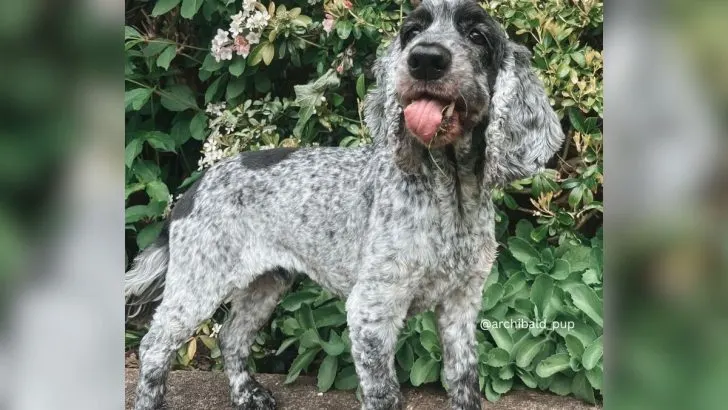All of us who are a bit older remember the cartoon Lady and the Tramp from our childhood. The gorgeous Lady represented the most well-known Cocker Spaniel color, but there are many more to explore.
Very few dog breeds have such a wide specter of variations in coat colors and patterns.
Within the Cocker Spaniel breed, we have 24 recognized patterns and colors; some dogs have markings and patterns on their fur, while others have a combination of markings, colors, and patterns.
It is understandable if you were unaware of the wide variety of Cocker Spaniel colors and hues. Still, after finishing this article, you will be an expert in all 24 varieties.
Solid Color Dogs
When talking about the fluffy Cocker Spaniels, we can find them in four solid colors.
But a fun piece of information – the Cocker Spaniel dogs do not need to be entirely one-colored to be classified as solid-colored.
Often, we can find white patches on their fur, like a white streak across their chest. A solid-colored dog can carry the parti-color gene but not vice versa because solid colors are a dominant gene.
That means when we breed a parti-color Cocker Spaniel to a solid-colored one, they can only have solid-colored offspring, all of which will be carriers for parti-color genes.
However, if we breed a solid dog that carries the gene for partial color with a particolored dog, the result is some solid puppies and some particolored puppies.
All the pups from this litter that are solid colored must carry the parti color gene.
1. The Golden Dogs
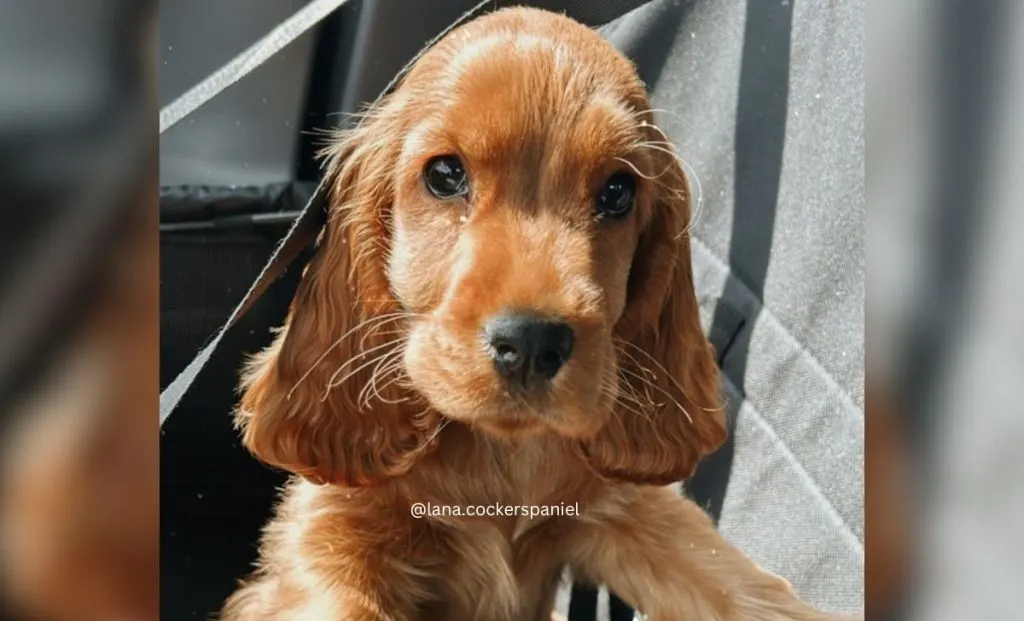
This particular hue was widely popularized by the Golden Retriever dogs – the perfect family dog with a soft coat and recognizable color.
Yet, the shade that reminds us of the Goldens is every day in many dog breeds, including Cocker Spaniel.
The golden Cocker Spaniel hue is sometimes called a caramel cream color, which doesn’t surprise anybody since they almost look the same.
The easiest way to describe this color is as a lighter type of red or a darker type of tan that the Cocker Spaniel comes in.
The Cocker Spaniels of this color usually sport a black nose (just like most dogs on this list). If the pup appears to be a lighter shade, it is most likely that partial shade comes from color dilution.
2. The Black Dogs
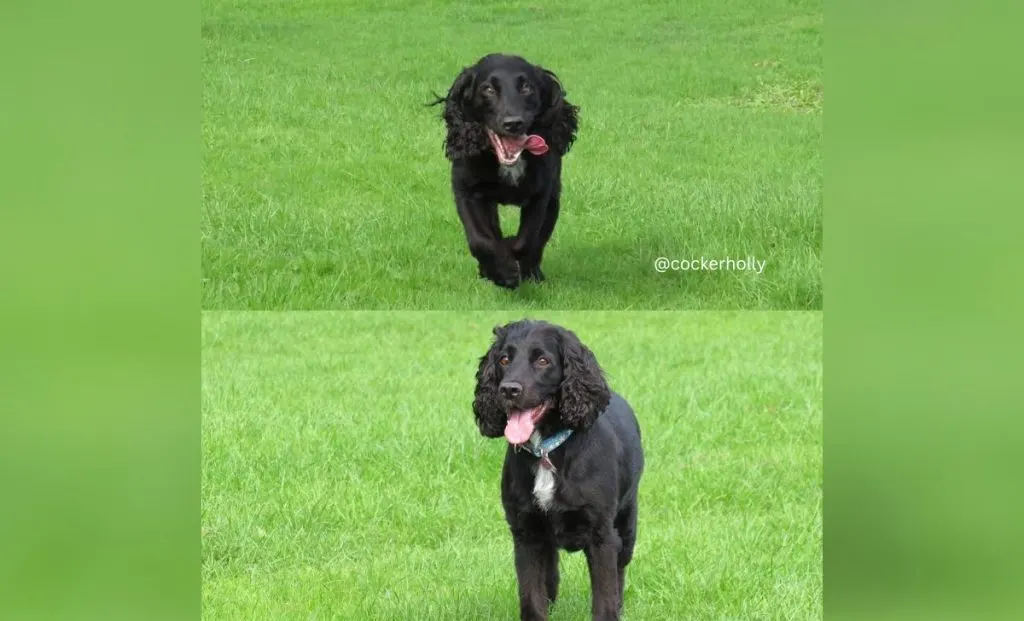
The gorgeous solid black is the most common Cocker Spaniel color recognized by the American Kennel Club (AKC).
If we look at the breed standard that the AKC issues, black Cocker Spaniels must be completely black, just like their nose and the area around their eyes.
Yet, some small white markings might show in the area below the dog’s mouth, which is acceptable for confirmation events but is not preferable.
When we look at their big, adorable eyes, they should be a deep brown or black color; any other eye color is considered a fault by the breed standard of all the major canine organizations.
3. The Red Dogs

Two recessive red genes create a red-colored Cocker Spaniel.
Compared to black Cocker or liver Cocker puppies, solid red pups have a 30% higher chance of keeping the white on their faces.
A solid red Cocker Spaniel dog has a deep color, which is easiest to describe as combining pecan and mahogany hues.
Most dog enthusiasts compare this fur shading to the Irish Setters’s recognizable red color. The two breeds have a similar coat, but the Cocker Spaniels have curlier coat hair.
When we try to boop their nose, we will notice red Cockers have brown noses varying in liver hues. A black nose might also appear, but it is pretty rare.
4. The Liver Dogs
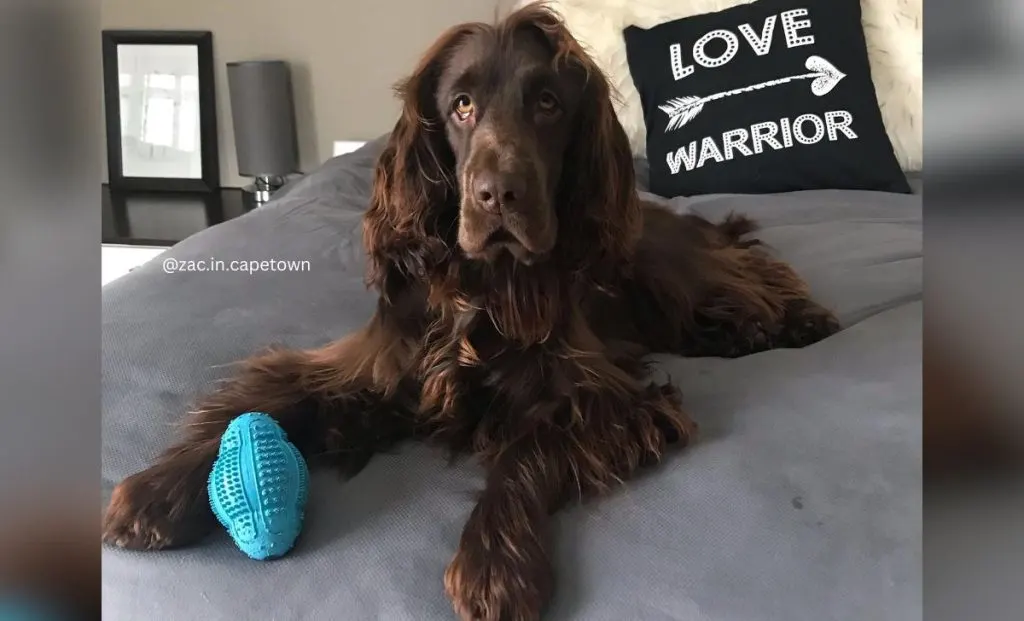
The liver color is very similar to the chocolate color, so they are often confused. However, they are not the same shade.
The main difference between liver puppies and chocolate ones is the undertone of the coat shade.
Liver puppies have a hint of dark red tint, while chocolate puppies have more of an earthy undertone to their coats.
Another difference is that liver-colored Cockers often have a pinkish-brown nose. In other cases, a black or a pure brown one will adore the dog’s face.
Liver is not the most common coat color for a Cocker Spaniel, but it isn’t impossible to spot either.
Most often, working Cocker Spaniel lines carry this color; it is usually paired with a white line that goes from the dog’s neck all the way down to their stomach.
The Particolored Dogs
Cocker Spaniel dogs are categorized as particolored if they have a considerable amount of white on their coats.
This means that their coat is two-toned, with the primary color either being one of the base colors or white.
Thanks to the placement, the size, and the type of their markings can differ, no two particolored Cocker Spaniel dogs have identical coats.
Their fur might look like a solid color with just a few stray fractions of another color.
5. The Black And White Dogs
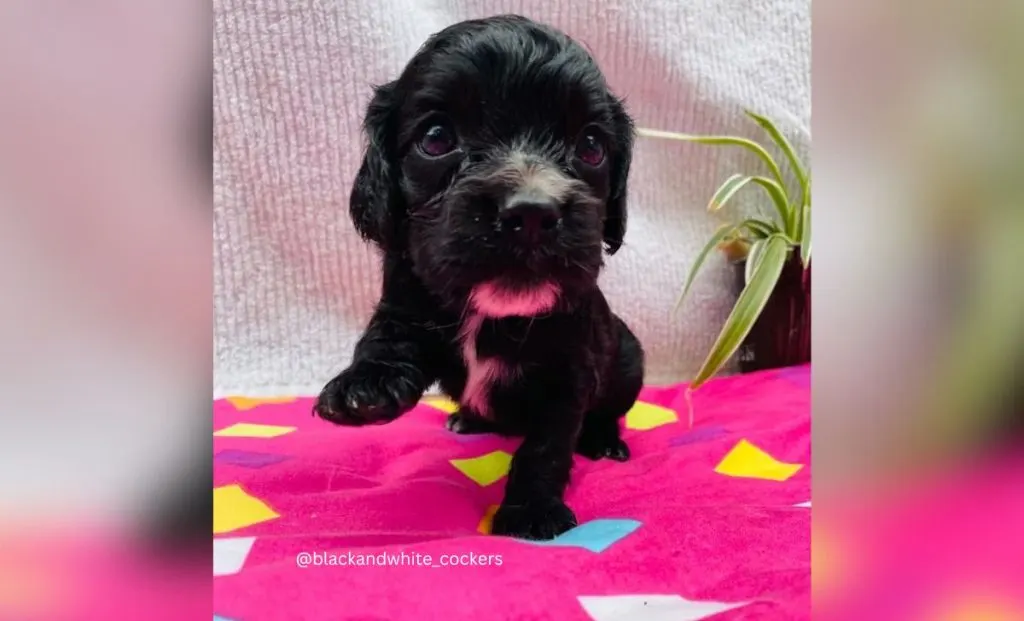
Even though the dominant shades in this color combination are black and white, sometimes a third color might also appear in some parts of the dog’s coat.
Thanks to their resemblance to the world-known cookies, they are often called Oreo Spaniels.
Puppies with black and white coats carry a dominant white color gene and a recessive black coat gene.
These dogs are distinguished by white colored fur that shows on their muzzle and a line that starts between the eyes and goes all the way to the top of the head of the dog.
This combination is one of the most common ones, particularly Cocker Spaniels.
The black-and-white combination also appears in other breeds, including Pitbulls, Border Collies, Shih Tzus, Huskies, and French Bulldogs.
6. Liver And White Dogs
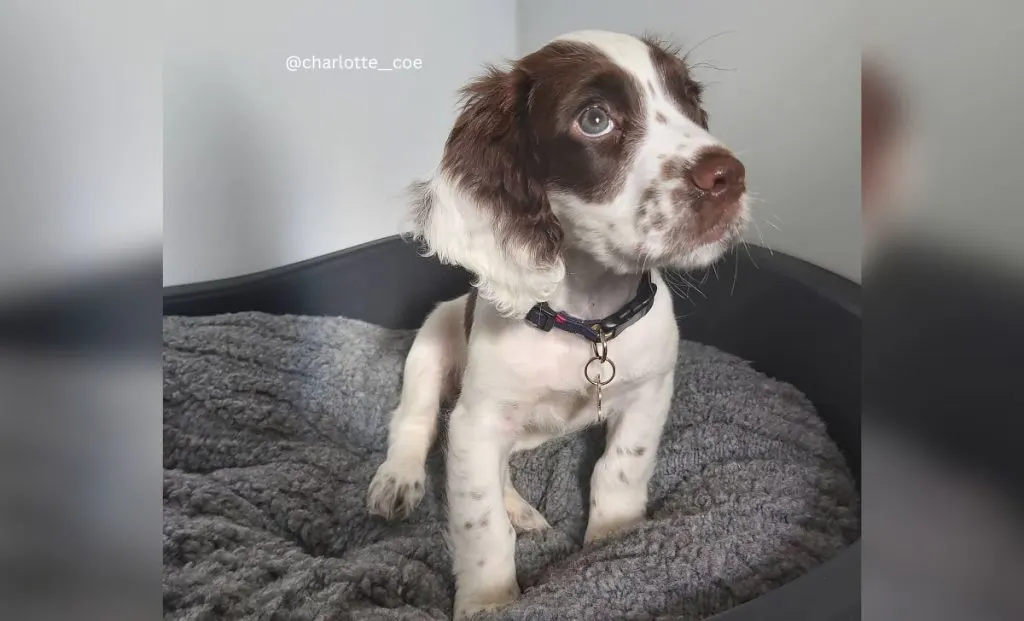
The combination of the liver and white coat color in English Cocker Spaniels is not so common, with the liver being the recessive gene and white being the dominant gene.
This color combination features white spots primarily on the nose, ears, mid-back, chest, and occasionally near the eyes.
7. Orange And White Dogs
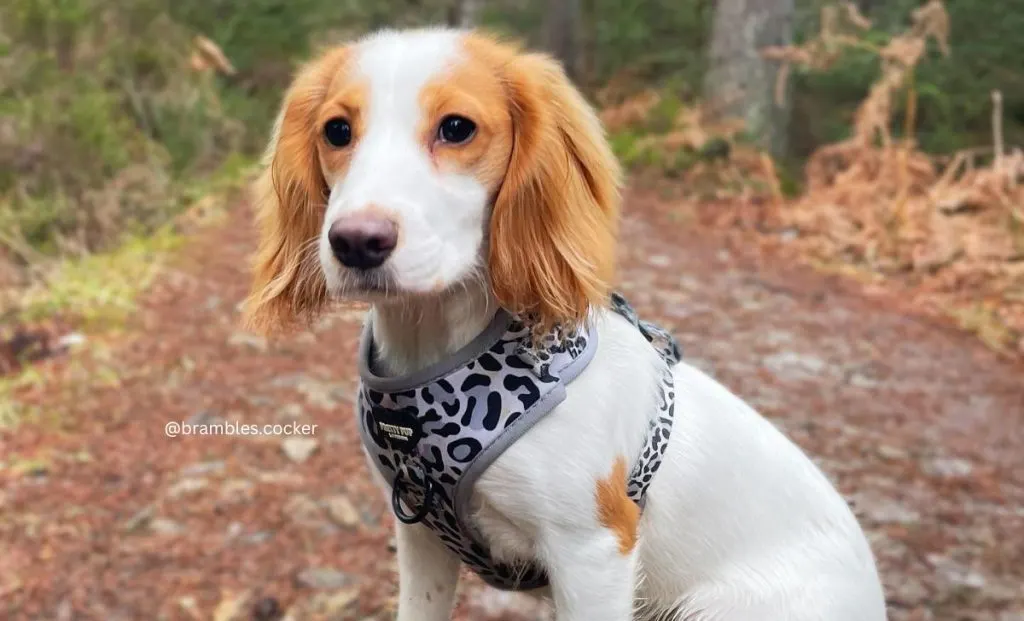
The recessive red gene produces a red that seems lighter in the variation of the particolored dogs of this breed.
These puppies are then registered as oranges.
The patches are usually found around the eyes of the dogs as well as the muzzle, the ears, the back of the dog, and sometimes even the paws, while the rest of the body is generally white (with a few fractions of orange in some cases).
8. The Lemon And White Dogs
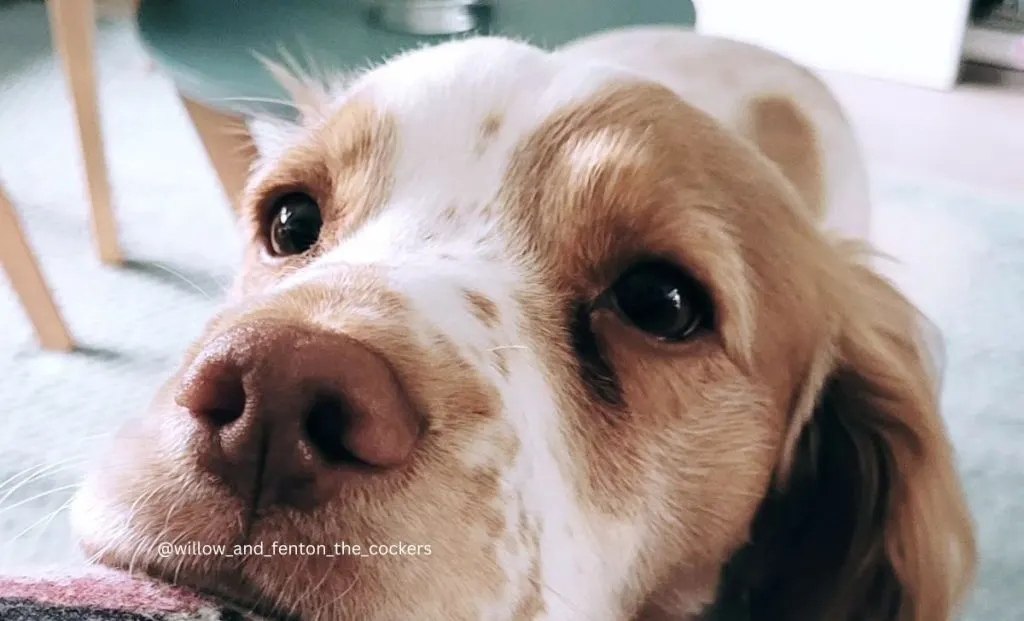
A lemon-coat Cocker Spaniel will be registered as having a red coat and a liver nose.
Any other coat pattern or combination on a lemon will have the word “lemon” in the name when registered, for example, the lemon and white Cocker Spaniel.
The lemon and white dogs have the brightest shade combination, characterized by light beige colored patches on a white coat.
The American Kennel Club (AKC) does not recognize this shade, but lemon and white-colored dogs sometimes appear in Cocker litters.
If you see a Cocker pup in this color in the wild, consider yourself lucky because these dogs are rare.
People often confuse lemon-shade dogs with golden or cream dogs, but lemon should be somewhere between these colors on the color spectrum.
9. The Red And White Dogs
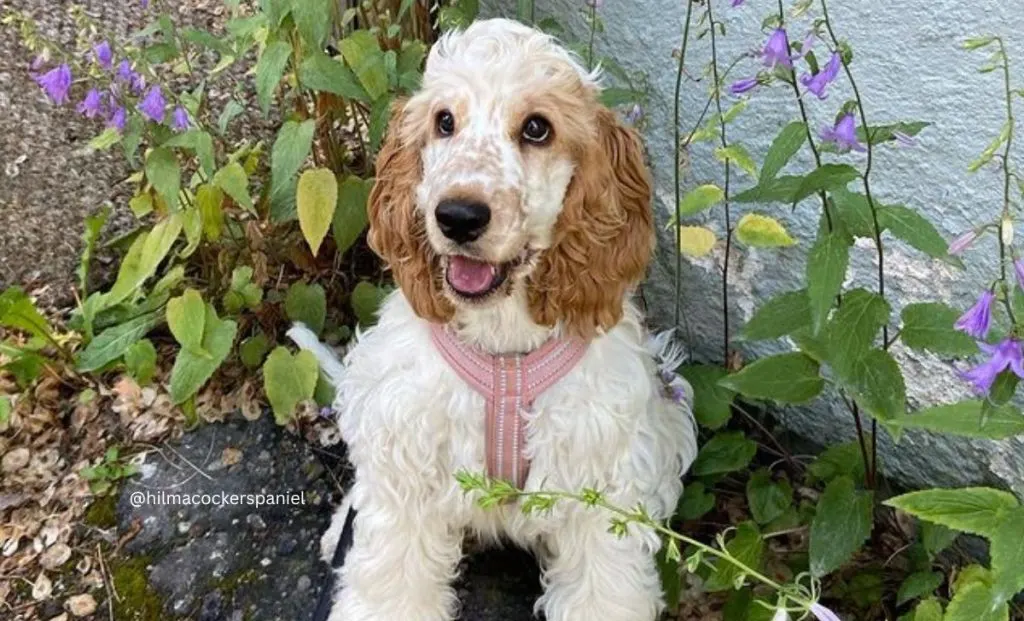
Red and white Cocker Spaniels have the same composition of coat as the orange and white ones, the only difference being the red gene is darker in this case.
Red and white is another color combination that is not recognized by the AKC, meaning these dogs are not suitable for conformation events, but they still make excellent family pets.
10. The Roan Patterned Dogs

Roan is distinguished by the base coat colors brown, black, or red, which have been made lighter by white fur.
Roan seems to be a dominant gene compared to non-roan, known as open marks.
11. The Blue Roan Dogs

This coat color is a bit deceptive. There is no actual blue fur on a blue roan pup.
Instead, the fur is black and speckled with white hair, making the dog appeal lighter, with a blue-gray hue to them.
Blue Roan puppies have long, floppy ears that are a solid black color with solid black patches on the eyes and the nose of the dog.
The remarkable roan pattern coats the rest of their body, but the dogs could also have some solid black spots.
12. The Lemon Roan Dogs
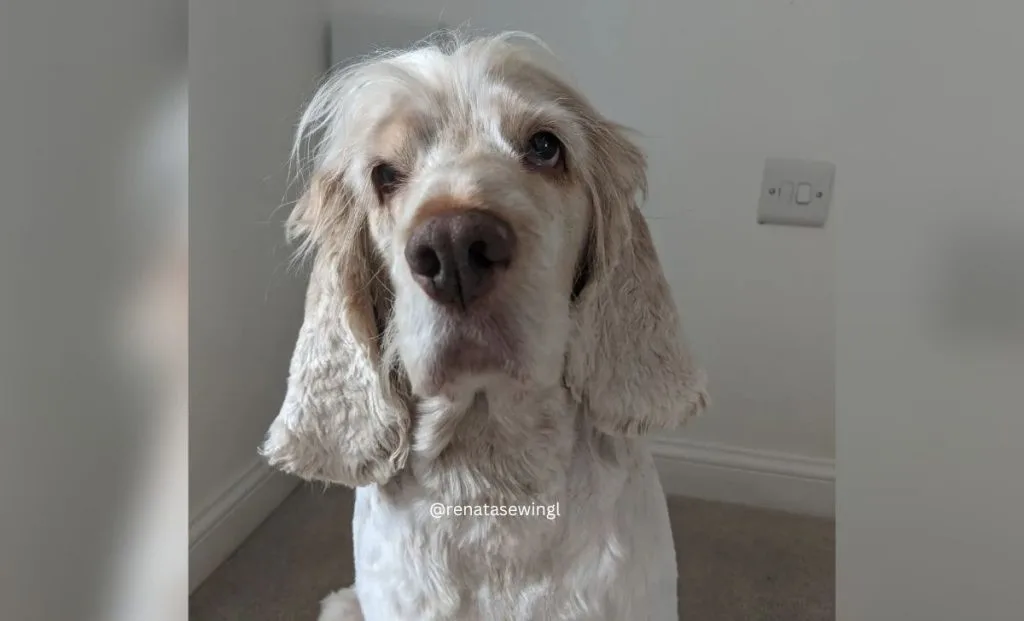
As mentioned, a solid lemon dog is registered as a golden or red Cocker. Lemon is the most recessive of all the roams and the least often coloration these dogs can have.
Lemon roan is a shade with black or bright brown pigment that has been further diluted into a tan-like color with a white background.
Several parts of the dog’s body can contain the lemon shade.
13. The Chocolate Roan Dogs
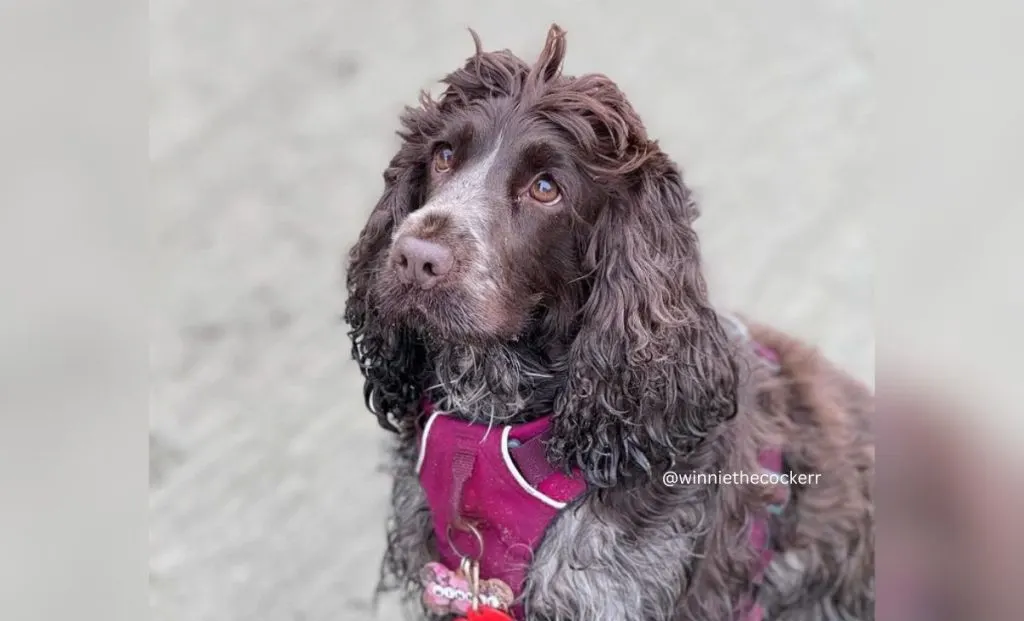
The pattern we call chocolate roan can be found on liver-colored dogs. It has white hair throughout the brown coat, making a chocolate result.
This type of Cocker Spaniel has markings like the parti pattern, but the chocolate color is more dominant on the white background than the parti color.
14. The Orange Roan Dogs
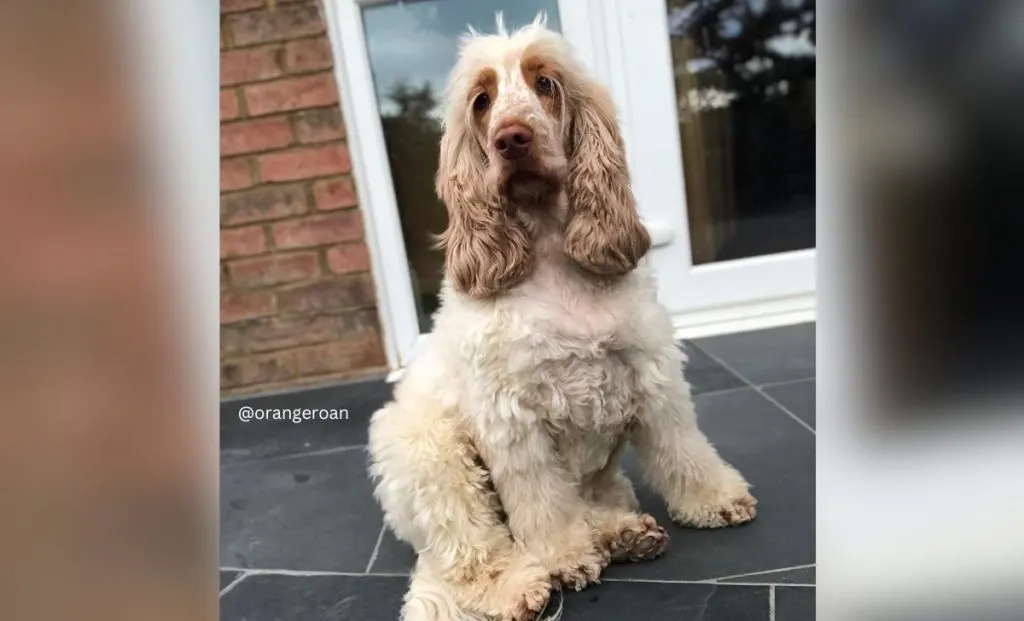
Orange roan dogs come with a red undercoat that eventually grows a mixture of white hairs. The white hairs can be located all over the dog’s body or appear in specks in various places on the coat.
Sometimes, orange roan pups get mistaken for orange and white particolored Cockers because the two share similar patterns.
The main difference is the amount of orange color on the white coat.
Orange is much more dominant in roan patterns because it shows in specks and patches all over the body.
Tan Markings
Tan marks in this breed usually appear over the eyes of the dog, on the muzzle, chest, legs, and even under the dog’s tail.
Tan markings can occur on any coat color or pattern. The tan gene is recessive, and a puppy that is already tan must have inherited the trait from both of its parents.
If a puppy inherits one gene from each parent and then breeds with another Cocker carrying the same gene later in life, it may develop a tan without exhibiting tan markings.
15. The Black And Tan Dogs
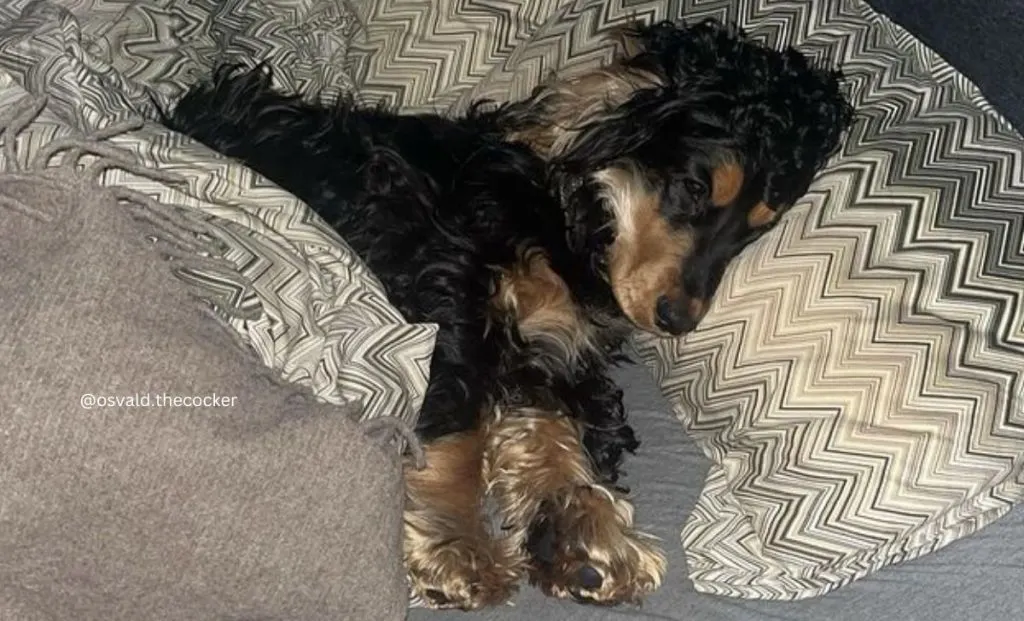
These gorgeous puppies have a shiny, black coat with tan markings in distinct places throughout their coat.
Tan points can vary in color. From a light beige shade, all the coverage on the dog’s body should be limited to 10 % or less.
The same rule applies to black and tan Cocker puppies with the same shade combination as the Doberman breed, the Rottweilers, the Dachshunds, and many other dogs.
16. The Liver And Tan Dogs
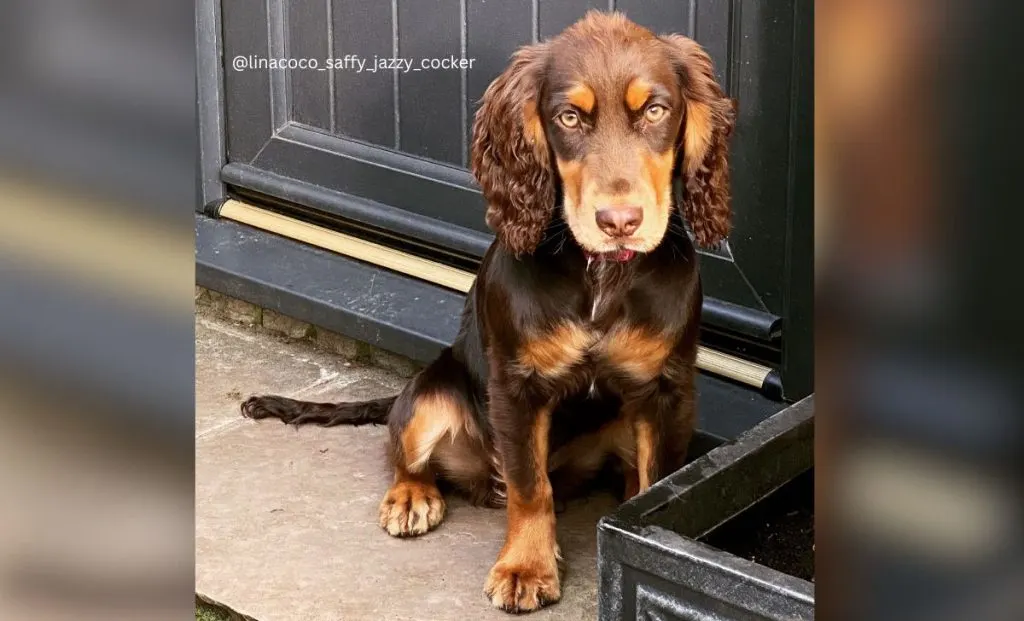
The liver and tan Spaniel pup is sometimes confused with a brown one.
These Cockers have a liver coat color with tan markings on them, and they can be born to parents with various color combinations.
17. The Blue Roan And Tan Dogs

This coat type is best explained as a blue roan Cocker Spaniel dog with tan patches that appear in specific parts of the dog’s body.
People often confuse this mix of colors with the tri-colored black, white, and tan Cockers, mainly because their coats contain the same shades.
However, the black and white in the roan variation mainly blend into a blueish-gray shade, which is why it’s called a blue roan.
Still, the tan markings are visible and cannot be mistaken for any other color.
18. The Liver Roan And Tan Dogs
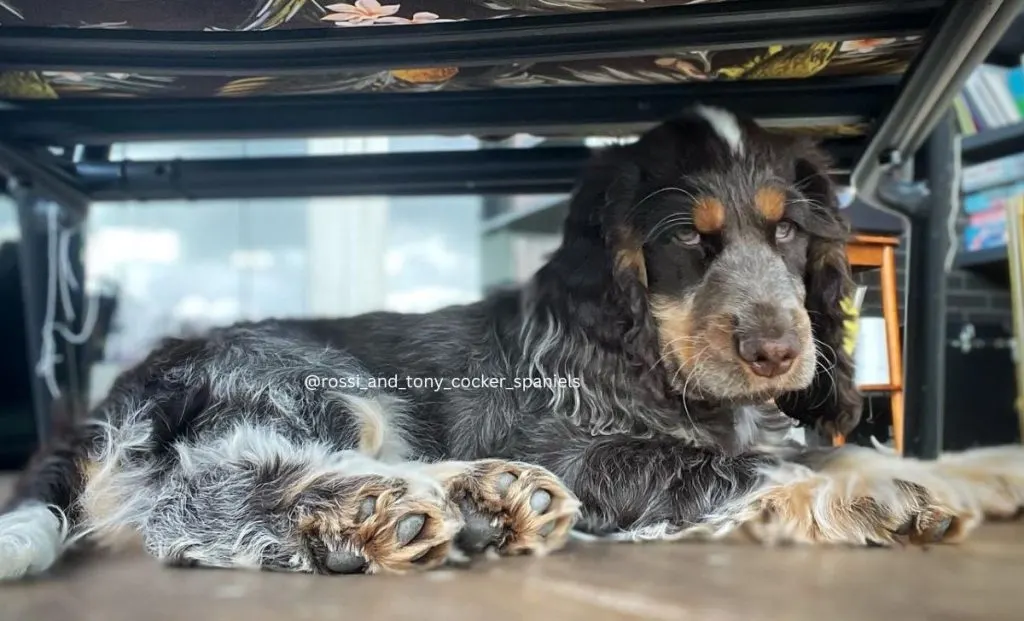
Like the liver and tan Spaniel dog, the liver roan and tan puppies are diluted and lighter in color.
The liver roan and tan are combined similarly to the blue roan and tan.
They have two colors (liver and white) already blended into a gorgeous range of brown shades, from dark chocolate to a pale brown hue.
19. The Black, White And Tan Dogs

This mixture of colors and markings makes a stunning coat. The coat is identical to a black and white Spaniel dog but with the addition of tan markings.
20. The Liver, White And Tan Dogs
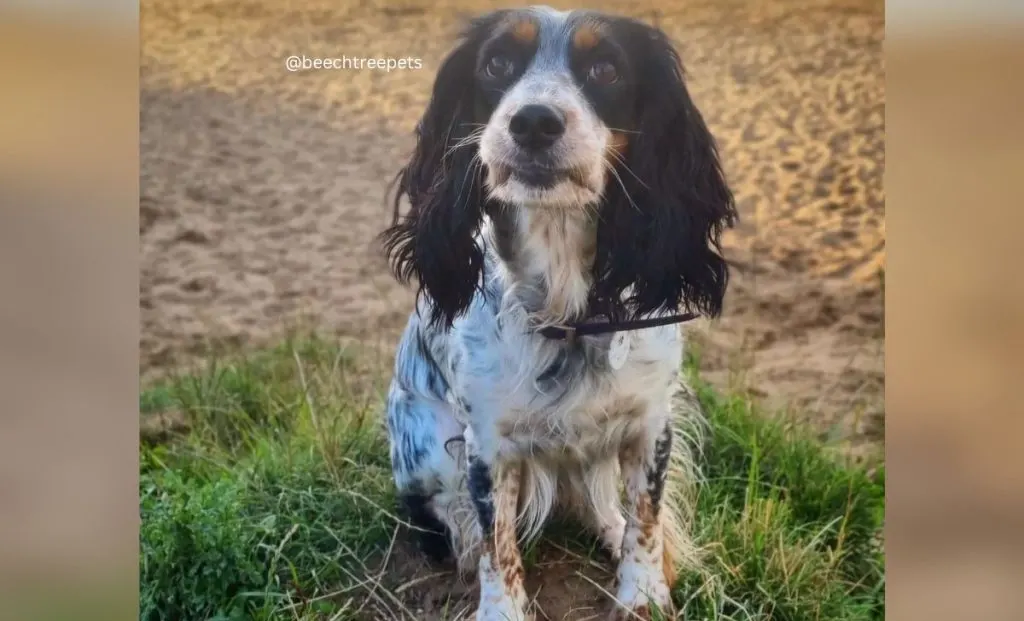
As another stunning combination of colors, the liver, white, and tan Spaniel dog stands out with its tan eyebrows and dark ears.
You’ll get the perfect and unique-looking pup if you take a bicolor puppy covered in liver and white shades and add a bit of tan in specific spots.
Sable Cocker Spaniels
Cocker Spaniel dogs can also carry a variation of sable coats.
Each hair in a sable coat dog has two colors with black tips, making it an extraordinary hue of two colors.
The dog’s dominant color will be at the base of each hair, but the tips of the hair will all be black.
21. The Sable And Tan Dogs
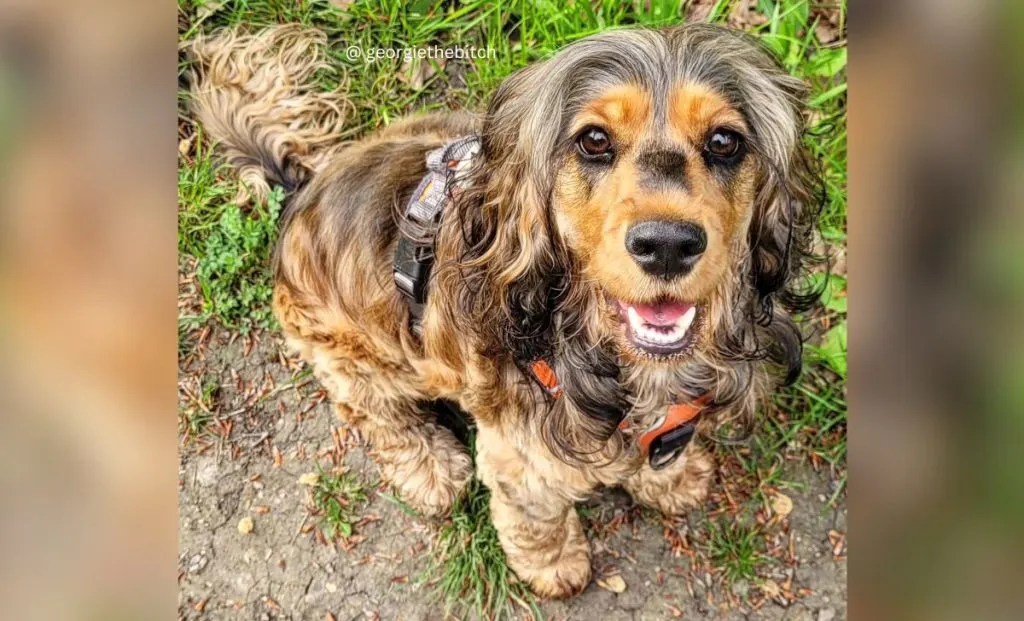
A sable and tan Cocker Spaniel has an essentially sable coat with tan-colored markings.
This puts more depth into an already fascinating coat.
22. The White And Sable Dogs
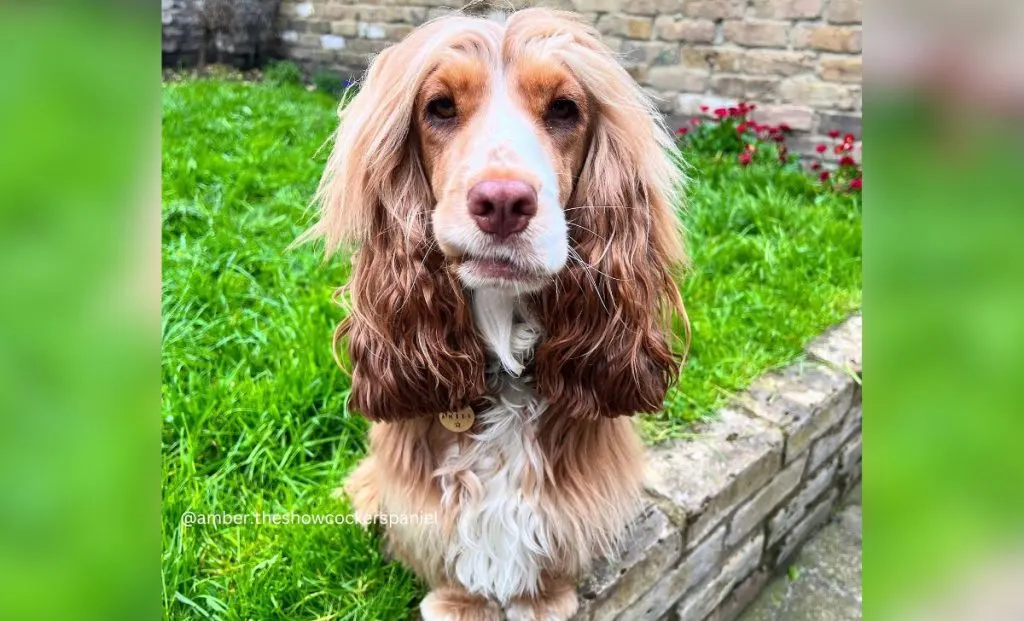
A white and sable Spaniel has a lighter fur color, with the sable adding slight contrast and depth.
This coat can look beige or cream-colored.
23. The Open Marked Pattern Dogs
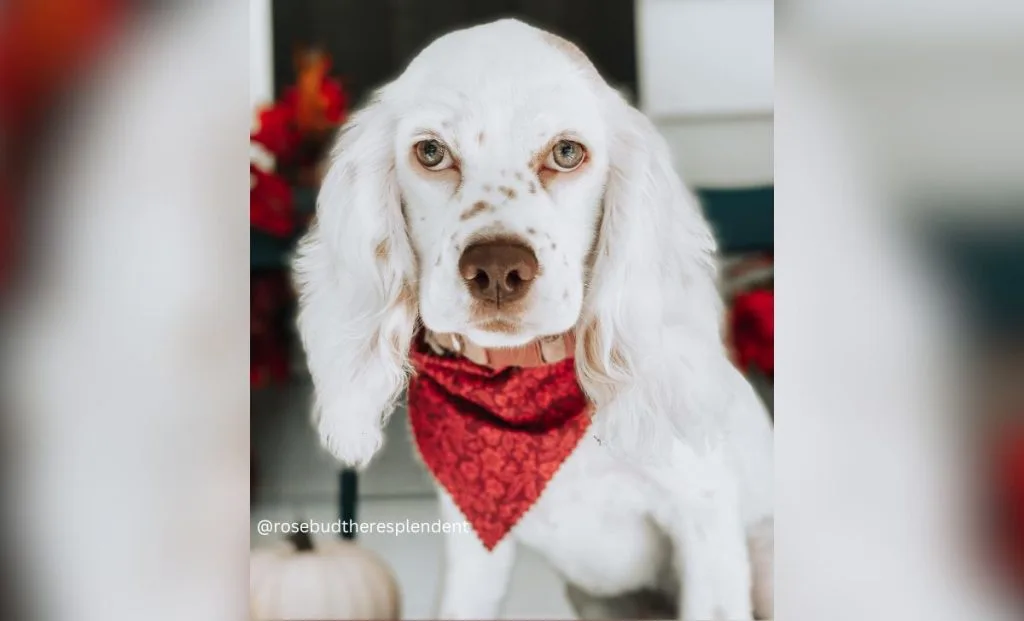
If roans are unique thanks to the little specks of color on all body parts, the bi-color and tri-color dogs are recognized because of the open-marked design incorporating one or two colors with a pure white base.
24. The Ticking Pattern Dogs
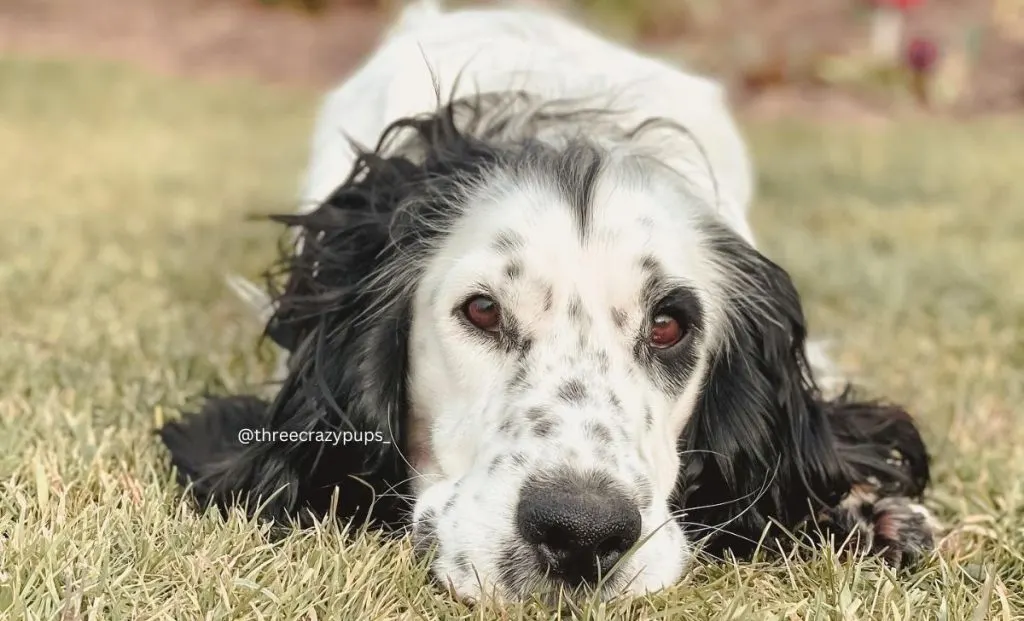
Where the hair on the dog should have been white, we can find colored flecks called ticking.
When ticking happens between patches, the pups are registered as colored white and ticked.
This variety of patterns is common in roan shades.
25. The Ash Dogs
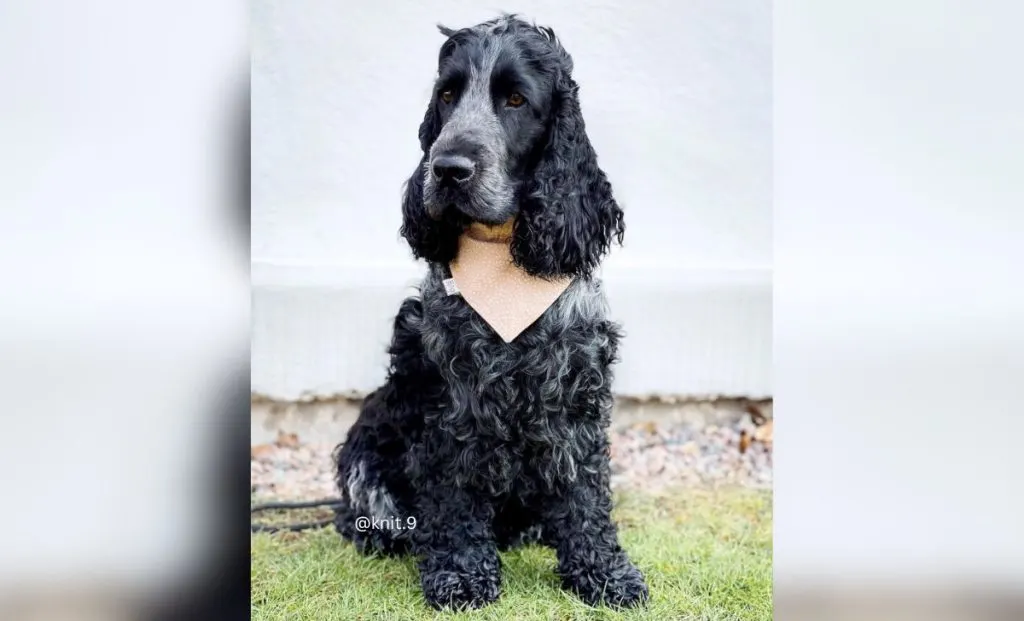
Ash Spaniels are often called Gray Spaniels because they have the second-rarest coat color of the breed.
Instead of having a classical roan pattern, they carry a recessive set of white genes that combine with their dominant black coat color to create the grey base.
Their paw pads and noses are lighter in color, producing a distinctive appearance.
26. The Merle Dogs

This pattern is believed to result from the mutant pigment gene that carries this pattern and causes a change in the dog’s eyes and fur color.
Although it is impossible to demonstrate this in a laboratory, a general opinion maintains that the merle gene was brought in from another dog breed.
This is one of the main reasons Merle is not accepted as an official shade by the breed standard.
Another possible reason would be the fear of crossing two merle pups, which could result in a double merle canine prone to severe health issues.

Nandina has been a lifelong dog owner and enthusiast. She shared her home with multiple breeds, including Giant Schnauzers, Cane Corsos, and Huskies. Currently, she is raising a three-year-old rescue and a working-line German Shepherd puppy.
Actively engaged in IGP dog sports for two years, Nandina is a certified instructor for basic obedience and socialization. She works as a trainer in her local dog sports club, and in her spare time, she handicrafts biothane gear for dogs.
